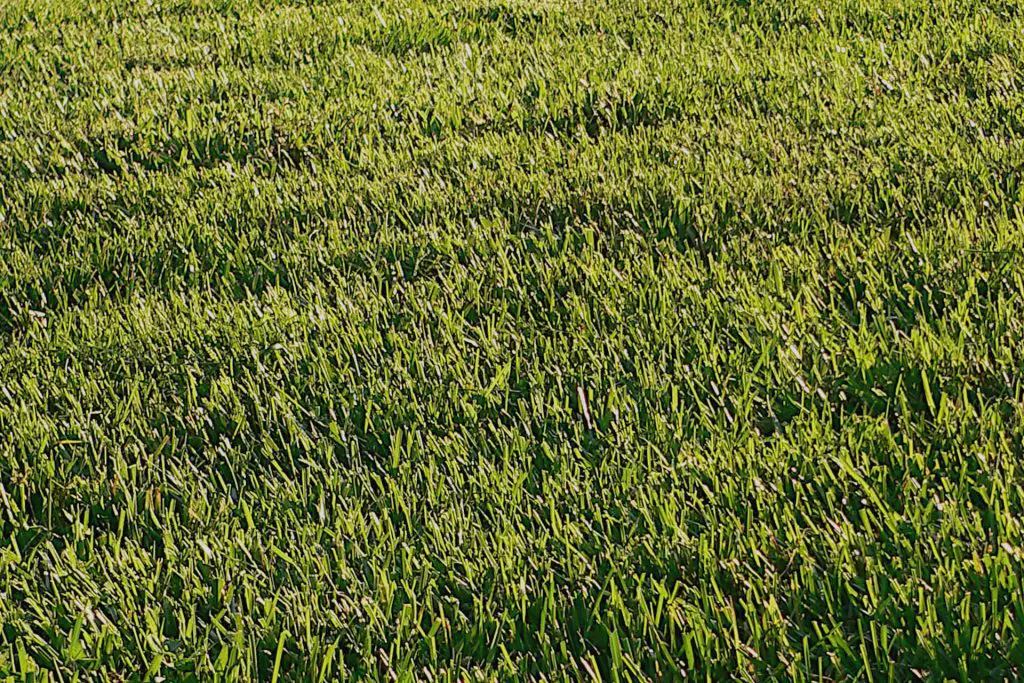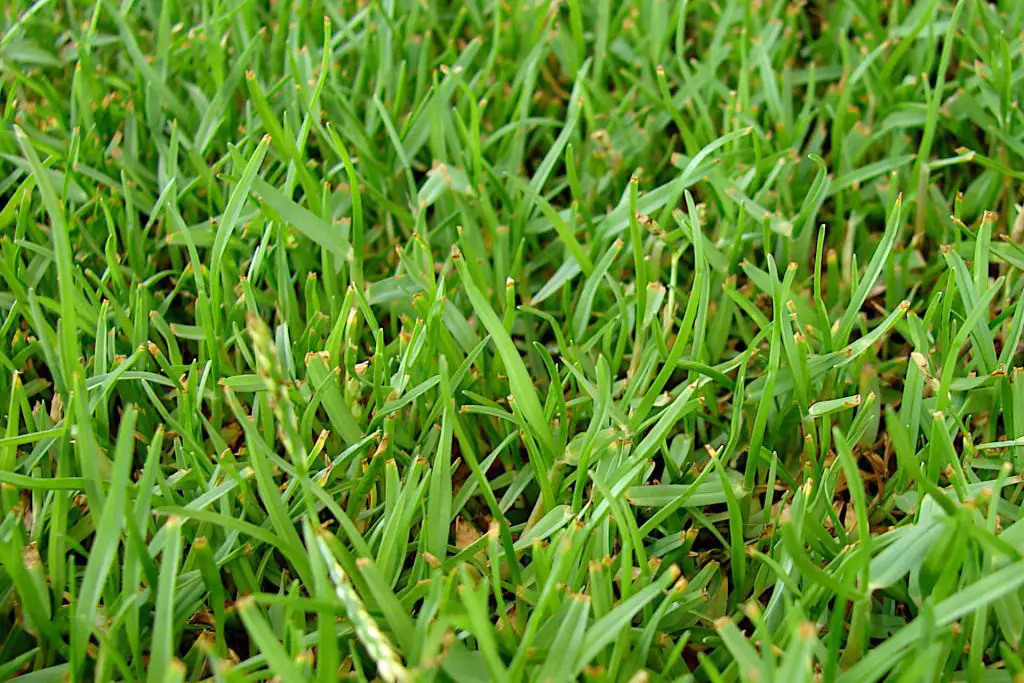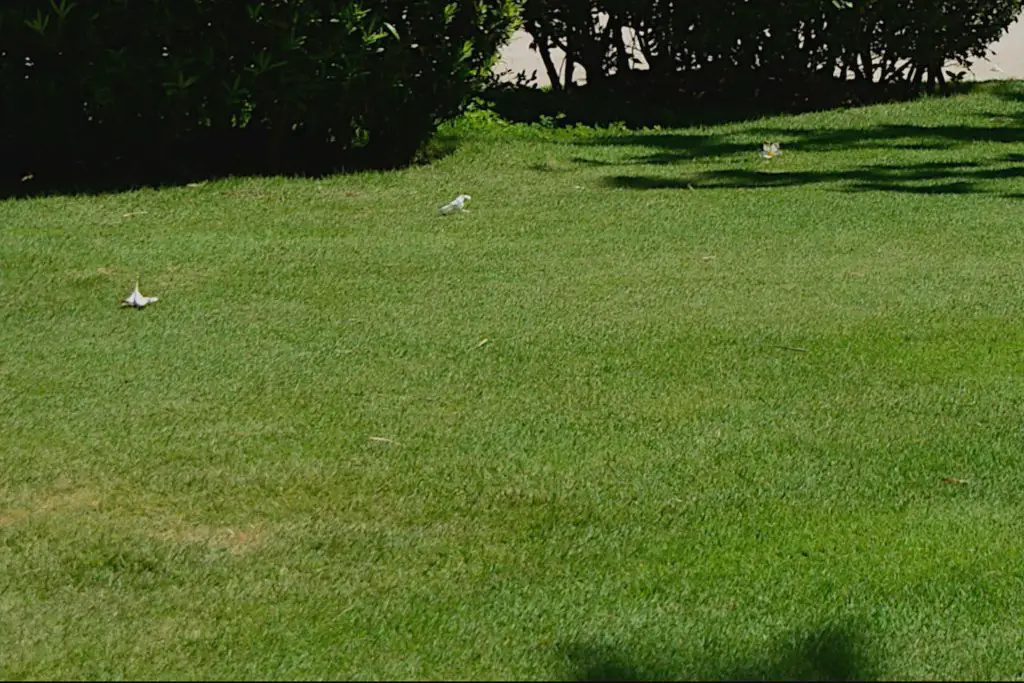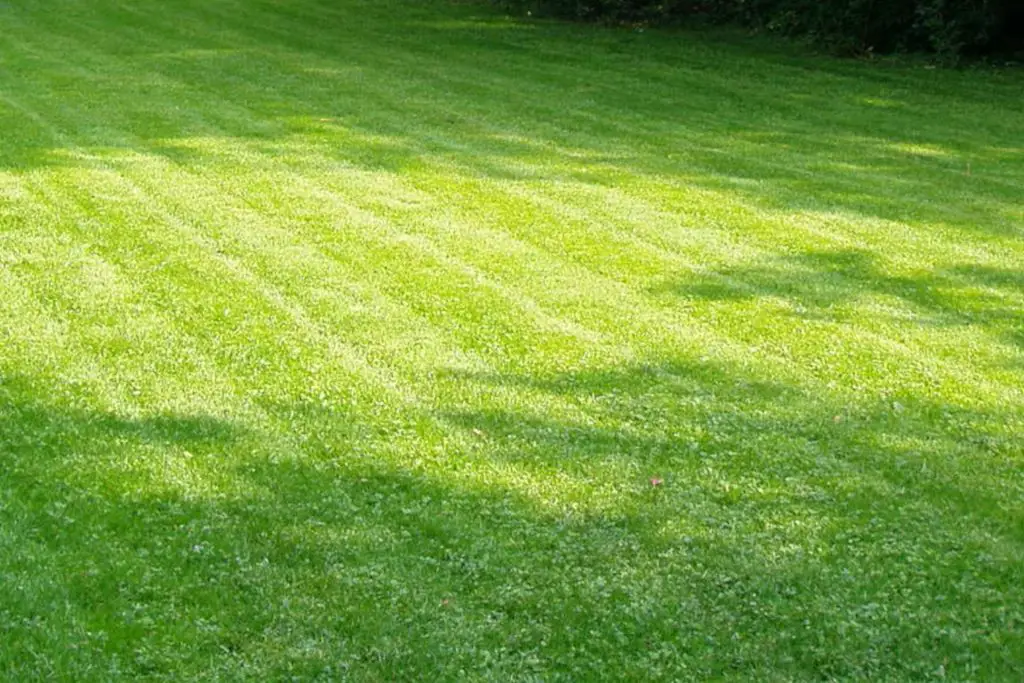Choosing the Right Grass in Texas for the Perfect Lone Star Lawn
Imagine stepping onto a lush, green lawn that not only thrills your senses but also thrives in the Texas heat. Sounds like a dream, right? Well, it’s entirely achievable, but the secret lies in choosing the right grass type tailored to the unique Texas climate. The Lone Star State is known for its diverse weather conditions, ranging from humid summers to chilly winters. This variability makes the selection of an appropriate type of grass in Texas not just a matter of aesthetics but also a crucial decision impacting long-term maintenance and water efficiency.
Below, we’ll look into the various grass types suited for Texas, from popular choices like Zoysia and Bermuda to lesser-known yet effective options like Centipedegrass and Carpetgrass. We’ll explore factors such as soil types, climate adaptability, and natural tolerance to diseases and pests. But we’re not just relying on common knowledge or hearsay. Many of the insights are backed by academic research from reputable institutions like Texas A&M University and USDA-ARS.
So, whether you’re a homeowner looking to revamp your lawn or a landscaper seeking the most resilient and attractive grass types, this guide is your go-to resource. We’ll even tackle some thought-provoking questions like, could the rising popularity of Zoysia be attributed to its academic backing? Or how do different soil types across Texas regions influence your choice of grass?
Types of Grass Suited for Texas

In the vast and diverse landscape of Texas, choosing the right grass for your lawn is like selecting the perfect pair of boots—comfort, durability, and style are key. Texas predominantly falls under the warm-season grass zone, making it essential to pick grass types that not only withstand the heat but also flourish in it. Let’s explore some of the main grass varieties that can be used.
Texas Grass Types
Zoysia
Zoysia is the Swiss Army knife of grasses, versatile and adaptable. Known for its natural tolerance to a variety of environmental factors, Zoysia is a top pick for Texas homeowners. It’s not just about its lush green appearance; this grass type is also water-efficient and cold-hardy, according to academic research from Texas A&M University and USDA-ARS.
- Best For: Lawns with mixed sun and shade
- Maintenance: Moderate
- Water-Efficiency: High
Kentucky Bluegrass
Yes, Kentucky Bluegrass, traditionally being a cool-season grass you might be surprised to find it on the list. But gradually over the last 30 or so years, Kentucky Bluegrass has made a southern migration thanks to scientific advancements. New hybrids like Reveille, SPF 30, and Thermal Blue are designed to be heat-tolerant. These hybrids are often part of custom grass mixes that include tall fescue, offering a blend of beauty and resilience.
- Best For: Lawns that receive ample sunlight
- Maintenance: Moderate to High
- Climate Adaptability: Improved with new hybrids
Centipedegrass
Centipedegrass is the introvert of grass types—low-key and low-maintenance. It’s an excellent choice for homeowners who prefer spending more time enjoying their lawn rather than working on it. This grass type is particularly good at soil adaptation, making it versatile for different regions within Texas.
- Best For: Low-maintenance lawns
- Maintenance: Low
- Soil Adaptation: High
Carpetgrass
If your lawn is more shade than sun, Carpetgrass could be your best bet. This grass type thrives in wet, shady areas where other grass types struggle. It’s not the most drought-tolerant, but its ability to grow in less-than-ideal conditions makes it a worthy contender.
- Best For: Shady and wet areas
- Maintenance: Moderate
- Drought-Tolerance: Low
Buffalograss
Native to the Great Plains, Buffalograss is as Texan as it gets. This grass type is well-suited for the state’s varying climate conditions, requiring minimal water and maintenance. It’s a solid choice for those looking to go the eco-friendly route.
- Best For: Eco-friendly lawns
- Maintenance: Low
- Water-Efficiency: High
St. Augustine
St. Augustine is the go-to grass for coastal areas of Texas. It loves the sun and can tolerate salt, making it ideal for beachside properties. However, it’s not the most drought-tolerant grass, so it may require a bit more TLC when the weather gets hot.
- Best For: Coastal areas
- Maintenance: Moderate to High
- Salt Tolerance: High
Bermuda
Last but not least, Bermuda is the marathon runner of grass types—hardy, resilient, and sun-loving. It’s a common choice for sports fields and large open areas due to its high traffic tolerance and quick recovery from wear and tear.
- Best For: High-traffic areas
- Maintenance: Moderate
- Traffic Tolerance: High
Comparison Table
| Grass Type | Best For | Maintenance Level | Special Features |
|---|---|---|---|
| Zoysia | Mixed sun & shade | Moderate | Water-efficient |
| Kentucky Bluegrass | Ample sunlight | Moderate to High | Heat-tolerant hybrids |
| Centipedegrass | Low-maintenance | Low | Soil adaptability |
| Carpetgrass | Shady & wet areas | Moderate | Thrives in poor conditions |
| Buffalograss | Eco-friendly | Low | Native to Texas |
| St. Augustine | Coastal areas | Moderate to High | Salt-tolerant |
| Bermuda | High-traffic areas | Moderate | Quick recovery |
Choosing the right grass type for your Texas lawn is a significant decision that impacts its beauty, resilience, and your peace of mind. Whether you’re looking for low-maintenance options like Centipedegrass and Buffalograss, or something more robust like Bermuda, understanding their unique characteristics will help you make an informed choice.
Factors to Consider When Choosing Grass for Your Texas Lawn

Selecting the right grass type for your Texas lawn is akin to choosing the right foundation for a house—it sets the stage for everything that follows. While the type of grass is crucial, there are other factors that come into play. Let’s delve into these considerations.
Soil Types
The soil type in your lawn is the unsung hero that plays a significant role in the success of your grass. Texas is home to a variety of soil types, ranging from sandy and loamy to clayey. Each grass type has its own soil preference, which can significantly impact its growth and health.
- Sandy Soil: Best for grass types like Bermuda and Zoysia, which require good drainage.
- Loamy Soil: Ideal for versatile grass types like Centipedegrass and Kentucky Bluegrass.
- Clayey Soil: Suitable for grass types like St. Augustine that can tolerate less drainage.
How Might Soil Types in Different Regions of Texas Influence the Choice of Grass?
The diversity in soil types across Texas regions can be a game-changer. For instance, the coastal areas with sandy soil might be more suitable for Bermuda, while the clayey soil in central Texas could be a better match for St. Augustine. Understanding the soil composition in your region can guide you in selecting a grass type that will not just survive but thrive.
Zoysia
Soil Preference: Zoysia is highly adaptable and can thrive in a variety of soil types, from sandy to clayey soils.
- pH Range: Prefers slightly acidic to neutral soil (pH 6-7).
- Nutrient Requirements: Moderate need for fertilization.
Kentucky Bluegrass
Soil Preference: Best suited for well-drained, fertile soils.
- pH Range: Prefers slightly acidic to slightly alkaline soil (pH 6-7.5).
- Nutrient Requirements: High need for nitrogen-based fertilizers.
Centipedegrass
Soil Preference: Adapts well to acidic, sandy, and well-drained soils.
- pH Range: Prefers acidic soil (pH 4.5-6).
- Nutrient Requirements: Low fertility needs.
Carpetgrass
Soil Preference: Thrives in poorly drained, sandy soils.
- pH Range: Tolerant of acidic soils (pH 5-6).
- Nutrient Requirements: Low to moderate fertility needs.
Buffalograss
Soil Preference: Best suited for well-drained, loamy to sandy soils.
- pH Range: Prefers neutral to slightly alkaline soil (pH 6.5-8).
- Nutrient Requirements: Low fertility needs.
St. Augustine
Soil Preference: Adaptable to a range of soil types but prefers well-drained, sandy loam to loamy soils.
- pH Range: Tolerant of slightly acidic to slightly alkaline soils (pH 5.5-7.5).
- Nutrient Requirements: Moderate need for fertilization.
Bermuda
Soil Preference: Prefers well-drained, sandy to sandy loam soils.
- pH Range: Prefers slightly acidic to neutral soil (pH 6-7).
- Nutrient Requirements: High need for nitrogen-based fertilizers.
Soil Compatibility for Texas Grass Types
| Grass Type | Preferred Soil Type | pH Range | Nutrient Requirements |
|---|---|---|---|
| Zoysia | Sandy to Clayey | 6-7 | Moderate |
| Kentucky Bluegrass | Well-Drained, Fertile | 6-7.5 | High |
| Centipedegrass | Acidic, Sandy | 4.5-6 | Low |
| Carpetgrass | Poorly Drained, Sandy | 5-6 | Low to Moderate |
| Buffalograss | Well-Drained, Loamy | 6.5-8 | Low |
| St. Augustine | Sandy Loam to Loamy | 5.5-7.5 | Moderate |
| Bermuda | Well-Drained, Sandy | 6-7 | High |
Knowing the soil compatibility for each grass type can significantly influence the success of your lawn. It’s not just about what’s above the ground but also what’s beneath it.
Climate Adaptability
Texas is a state of climatic contrasts, from humid coastal regions to arid deserts. Climate adaptability is a key factor when choosing a grass type. Some grasses like Buffalograss are native to Texas and naturally adapted to the local climate. Others, like the new hybrids of Kentucky Bluegrass, have been scientifically engineered for heat tolerance.
- Humid Climates: St. Augustine and Carpetgrass are well-suited.
- Arid Climates: Buffalograss and Bermuda are more appropriate.
Maintenance Level
Your lifestyle and the amount of time you can dedicate to lawn care also influence your choice. Some grass types are low-maintenance, requiring minimal watering and fertilization, while others may demand more of your attention.
- Low-Maintenance: Centipedegrass, Buffalograss
- Moderate Maintenance: Zoysia, Bermuda
- High-Maintenance: Kentucky Bluegrass, St. Augustine
Factors and Suitable Grass Types
| Factor | Low Requirement | Moderate Requirement | High Requirement |
|---|---|---|---|
| Soil Type | Sandy | Loamy | Clayey |
| Climate Adaptability | Humid | Mixed | Arid |
| Maintenance Level | Low | Moderate | High |
By considering these factors, you’re not just making a random choice; you’re making an educated decision tailored to your specific needs and local conditions. Whether it’s understanding the soil composition of your region or assessing the climate adaptability and maintenance level of various grass types, each factor is a piece of the puzzle.
Academic Insights on Zoysia—The Science Behind Its Popularity

When it comes to lawn care, especially in a state as diverse as Texas, academic research can offer invaluable insights. One grass type that has been the subject of extensive study is Zoysia. Let’s look at the academic perspectives and see why they feel Zoysia is the right grass in Texas to create the best lawn. We will focus on its water efficiency, cold hardiness, and natural tolerance.
Water-Efficiency
In a state where water conservation is a priority, Zoysia’s water efficiency stands out as a remarkable feature. Academic studies, particularly those conducted by Texas A&M University1, have highlighted this grass type’s ability to maintain its lush green appearance even under reduced watering conditions.
- Irrigation Requirements: Zoysia requires 20-30% less water compared to other common grass types like Bermuda.
- Drought Resistance: Its deep root system allows it to withstand periods of drought, making it a sustainable choice.
Cold Hardiness
Another aspect that has garnered academic attention is Zoysia’s cold hardiness. While most warm-season grasses struggle in colder temperatures, Zoysia has shown resilience. Research indicates that it can survive in temperatures as low as 30°F, making it a versatile option for various regions within Texas.
- Temperature Range: Thrives in temperatures between 30°F and 95°F.
- Winter Survival: Unlike other warm-season grasses, Zoysia can survive mild winters without going dormant.
Natural Tolerance
Zoysia’s natural tolerance to a variety of environmental factors has also been a subject of academic studies. This grass type is resistant to diseases, pests, and varying soil types, reducing the need for chemical treatments and thereby contributing to a healthier environment.
- Disease Resistance: Resistant to common lawn diseases like Brown Patch and Dollar Spot.
- Pest Resistance: Less susceptible to common pests like chinch bugs and billbugs.
Could the Popularity of Zoysia Be Attributed to Its Academic Backing?
The short answer is, if known about, then probably. The academic research supporting Zoysia’s benefits is not just a stamp of approval but a significant factor contributing to its popularity. Homeowners are increasingly looking for evidence-based choices, and the academic backing provides that assurance.
- Consumer Trust: Academic validation often translates to consumer trust, making people more inclined to choose Zoysia.
- Sustainability: The focus on water efficiency and natural tolerance aligns with growing consumer awareness about sustainability.
Academic Insights on Zoysia
| Academic Focus | Key Benefits | Implications for Homeowners |
|---|---|---|
| Water-Efficiency | Reduced irrigation | Lower water bills, sustainability |
| Cold Hardiness | Wider temperature range | Versatility across regions |
| Natural Tolerance | Disease and pest resistance | Lower maintenance costs |
The academic insights into Zoysia offer more than just data; they provide a comprehensive understanding of why this grass type is well-suited for Texas lawns. Whether it’s the water efficiency that aligns with the state’s conservation goals or the cold hardiness that expands its regional adaptability, each academic finding adds a layer of credibility to Zoysia’s benefits.
Ecological Considerations—The Environmental Footprint of Your Lawn

When it comes to lawn care, the ecological impact often takes a backseat, overshadowed by aesthetics and ease of maintenance. However, the type of grass you choose can have a lasting impact on the local ecosystem. In this section, we’ll explore the ecological considerations you should keep in mind, focusing on the choice between native and non-native grass types and their respective impacts.
Native vs. Non-Native Grass Types
The debate between native and non-native grass types is more than just a matter of personal preference; it’s an environmental concern. Native grasses like Buffalograss have evolved to thrive in the local Texas climate and soil, making them naturally more sustainable.
- Native Grasses: Buffalograss, Blue Grama
- Non-Native Grasses: Bermuda, Zoysia, St. Augustine
Advantages of Native Grasses
- Water Conservation: Native grasses are well-adapted to local rainfall patterns, requiring less supplemental watering.
- Pest Resistance: Being part of the local ecosystem, they have natural defenses against local pests.
- Low Maintenance: They generally require less fertilization and are more disease-resistant.
Advantages of Non-Native Grasses
- Aesthetic Appeal: Often chosen for their lush appearance.
- Versatility: Some non-native grasses are bred to be adaptable to various soil types and climates.
What Are the Ecological Impacts of Choosing a Non-Native Grass Type?
Choosing a non-native grass type can have several ecological implications:
- Water Usage: Non-native grasses often require more water, contributing to water scarcity issues.
- Chemical Dependence: They may require more fertilizers and pesticides, leading to soil and water pollution.
- Biodiversity Impact: Non-native species can outcompete local flora, reducing biodiversity.
Ecological Considerations
| Consideration | Native Grasses | Non-Native Grasses |
|---|---|---|
| Water Usage | Low | Moderate to High |
| Chemical Dependence | Low | Moderate to High |
| Biodiversity Impact | Positive | Negative |
The ecological considerations of your grass choice extend beyond your lawn; they impact the broader environment and community. Whether it’s the water conservation benefits of native grasses or the chemical dependence of non-native types, each choice carries weight. By making an informed decision, you not only contribute to a healthier, more sustainable lawn but also to a more balanced ecosystem.
Other Factors to Consider When Choosing Grass Variety

While soil type, climate adaptability, and ecological considerations are pivotal, there are other nuanced factors that can influence your choice of grass. In this section, we’ll explore some of these often-overlooked aspects, including low-maintenance choices, shade vs. sun tolerance, and additional climate adaptability nuances.
Low-Maintenance Choices
If you’re someone who loves a beautiful lawn but dreads the upkeep, low-maintenance choices might be your go-to. These grass types require less water, fewer nutrients, and minimal mowing, making them ideal for busy homeowners or those who prefer a more hands-off approach.
- Centipedegrass: Known for its low fertility requirements and slow growth rate.
- Buffalograss: A native grass that requires minimal water and is naturally pest-resistant.
Benefits of Low-Maintenance Choices
- Time-Saving: Less frequent mowing and watering.
- Cost-Effective: Reduced need for fertilizers and pesticides.
- Environmental Impact: Lower water usage and chemical dependence.
Shade vs. Sun
The amount of sunlight your lawn receives can significantly impact the health and appearance of your grass. Some grass types thrive in full sun, while others prefer a bit of shade. So what is the best grass for shade in Texas.
Most shade-tolerant:
- St. Augustine (warm season), especially such cultivars as Sapphire, Bitter Blue, Palmetto, and Seville, can do well with as little as four hours of direct sun daily.
Medium shade-tolerant:
- Zoysia grass has a good tolerance for medium-shade areas. While it will grow in northern climes, it’s best used as a warm-season grass, as it turns brown with the first frost
- Centipede grass can make do with about six hours of partial sun daily. Oaklawn and Tennessee Hardy tend to be the most shade-tolerant cultivars.
- Carpetgrass is also a great warm-season grass for light-shade areas.
Least shade-tolerant:
- Bermuda grass is not particularly shade-tolerant, and it requires around eight hours of direct sunlight daily to thrive.
- Kentucky bluegrass, like Bermuda grass, is not particularly shade-tolerant.
How to Choose Based on Light Conditions
- Full Sun: If your lawn receives more than 6 hours of direct sunlight, opt for sun-loving varieties.
- Partial Shade: For lawns with 4-6 hours of sun, consider shade-tolerant options.
Climate Adaptability: Beyond the Basics
While we’ve touched on climate adaptability earlier, it’s worth revisiting this factor to explore some additional nuances. For instance, some grass types are more salt-tolerant, making them ideal for coastal areas. Others are better suited for high-traffic areas, perfect for homes with pets or children.
- Salt-Tolerant: Zoysia, Bermuda
- High-Traffic Tolerance: Kentucky Bluegrass, Bermuda
Other Factors and Suitable Grass Types
| Factor | Suitable Choices | Additional Considerations |
|---|---|---|
| Low-Maintenance | Centipedegrass, Buffalograss | Time, Cost, Environment |
| Shade vs. Sun | St. Augustine, Centipedegrass | Light Conditions |
| Climate Adaptability | Zoysia, Bermuda | Salt and Traffic Tolerance |
Choosing the right grass for your Texas lawn is not a one-size-fits-all endeavor. It’s a complex decision influenced by a myriad of factors, each with its own set of implications.
Whether you’re looking for a low-maintenance option that allows you more leisure time, or you need a grass type that can withstand the salty air of a coastal region, understanding these additional factors can guide you in making a choice that’s not just good but great. After all, your lawn is an extension of your home, and it deserves the same level of thought and care.
The Wrap-Up: Choosing the Right Grass in Texas
Choosing the right grass in Texas is a multifaceted decision that goes beyond mere aesthetics. From understanding the soil composition in your region to weighing the ecological impact of your choice, each factor plays a critical role in the long-term success and sustainability of your lawn.
The academic insights into popular choices like Zoysia offer a research-backed perspective, adding a layer of credibility to your decision-making process. Whether you’re leaning towards native grasses like Buffalograss for their low environmental footprint or considering non-native options for their versatility, the key is to make an informed choice.
Don’t underestimate the importance of climate adaptability, especially in a state as climatically diverse as Texas. Your grass needs to be as resilient as it is beautiful, capable of withstanding everything from scorching summers to mild winters. And let’s not forget about maintenance levels; your lifestyle and the time you can dedicate to lawn care should also influence your choice.
Your lawn is more than just a patch of green; it’s an ecosystem in itself, one that requires thought, care, and above all, knowledge. By considering all these factors, you’re not just creating a lawn; you’re cultivating a sustainable, beautiful outdoor space that will bring you joy for years to come. Make your choice a wise one.
Related Articles
Centipede vs St Augustine Grass: Which is the Right Choice for Your Lawn
Is Fall A Good Time to Plant Centipede Grass?
Notes
- Texas A&M University: Zoysia Grass Varieties Tested in High Plains Climate
